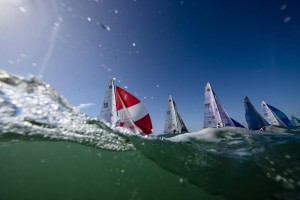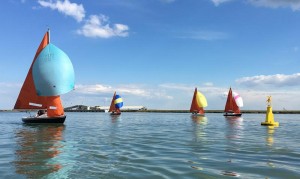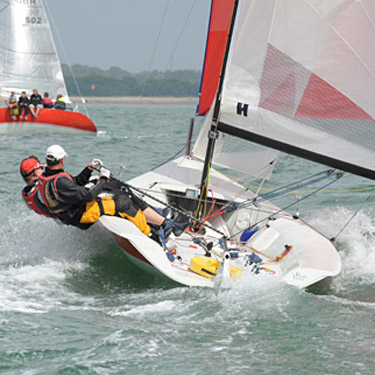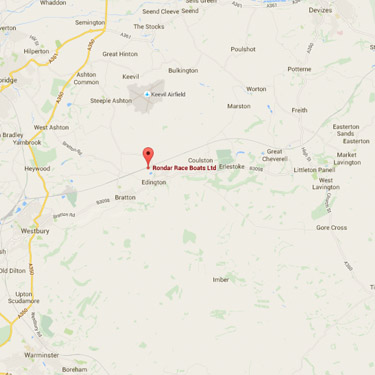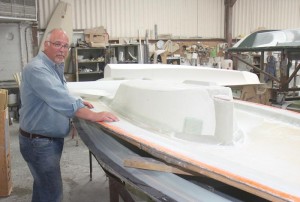
We talked to Paul Young, Managing Director or Rondar Boats, about the boats they build, making changes to classes and also his thoughts on club sailing, boat ownership, and what can be done to invigorate participation in the sport.
Mark: Paul could you first of all tell me a bit of the history of Rondar?
Paul: Yes, the company was originally started in the mid-sixties, so I think we’ve just had our fiftieth birthday. It was originally started by a couple of guys who were up in London in Radnor Mews, and they swapped the Radnor around to get the name, Rondar boats. At some point in the first two or three years, it changed ownership, and moved down to Stem Lane in New Milton, and that was the company that put Rondar on the map. There was a big explosion of dinghy sailing in the late sixties, early seventies, and fibreglass was coming through and they got up to a point of employing fifty-plus people, making seven or eight hundred boats a year – it was quite a big business.
Throughout the late seventies, and early eighties, there were recessions, dinghy sailing declined a little bit, and they moved into industrial molding, and eventually the company name and various models got sold to Peter White and Phil Milanes, who moved them up here to Wiltshire. Peter White was the 1973 505 World Champion and was the boat builder and a sailmaker for Seahorse Sails and Phil was the legendary foil maker, so they took over the production and brought it here. I was crewing for Pete in the 80’s and bought it in 1991 when Pete wanted to do other things, and I’ve been here ever since, basically.
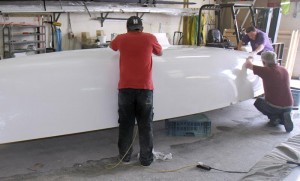 We currently make the Firefly, the Enterprise, the 505, we’ve just started making 470s, and then in keelboats we make the K6, the Viper, and the Sonar, and we are currently working with the Squib class, which will hopefully come on stream in the near future, and join the other classes. We also build K1, Fireball, and Solo for other companies. Over the years I have been here we have made over 30 classes.
We currently make the Firefly, the Enterprise, the 505, we’ve just started making 470s, and then in keelboats we make the K6, the Viper, and the Sonar, and we are currently working with the Squib class, which will hopefully come on stream in the near future, and join the other classes. We also build K1, Fireball, and Solo for other companies. Over the years I have been here we have made over 30 classes.
Mark: You have a small but skilled team building these boats. How do they switch between the different classes that you have to build?
Paul: We’re pretty lucky in the sense that our core team of laminators are all local, and some are related to each other and they have also been with me since 1991, so they could basically do it in their sleep, would probably the best way of describing it. They have the skills to build epoxy carbon 505s and go through to a collegiate Firefly and back to a Sonar, and that’s actually much hard than it sounds because all these boats have different strength and weight requirements, and key bits you have to get right, and they have quite a big library of experience to draw on.
Mark: Much of the machining you have to do for the various bespoke parts for these boats, how is that done and how do you handle it?
Paul: Over time, we’ve realized that the sourcing of these parts, and the ability to have all these specialized parts was pretty key to having the end product right, and so we’ve actually developed an in-house team of a couple of guys who basically make all of our bespoke fittings. We can do pretty much everything in house now and that obviously gives us quite a good ability to either tailor make things to suit particular customer’s needs or we can adapt boats and make unique fittings that make the boat perform better.
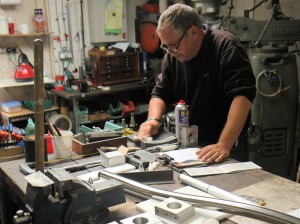
Mark: You’ve dealt with a number of classes which have gone through changes throughout the years, the Firefly being an example with the deck moldings. How do you work with the classes to go through these transitions?
Paul: That’s a good question. Our preferred method is to work very closely with the class, ascertain what we feel is the essential core element of that boat. For example with the Firefly, it started life as the first mass produced dinghy, immediately after the war when Fairey Marine had empty yards and glue ovens because they were no longer required to make Mosquito Airplanes, and so they adapted the boat to fit their production technique. That meant that it was available in volume, and at the right price, which got boats being sold to colleges and universities. We saw that trying to get the Firefly back into being the collegiate boat of choice was a key strategy for the class, so one of the things that we were looking to achieve out of it was a quick build time, a pretty robust boat, compliance with the Recreational Craft Directive, and all the things that would be important to that market. The class, of course, is mostly interested in racing the boats at weekend, so there was a slight need to appreciate each other’s position, but I think with the Firefly we’ve achieved it. It has become the collegiate boat of choice again, and plastic Firefly’s frequently owned by schools or colleges can win the Nationals and have done so, so hopefully that’s a good blend of the two attributes.
Mark: With the Sonar, you’ve been selling a number of boats to the USA and directly to the clubs, do you think this is a model which clubs are more and more moving towards and might well happen in the UK?
Paul: It certainly works in a lot of other areas of the world – effectively, in the US, comparatively few people own their own boats. Yacht clubs tend to provide them and then charge higher levels of membership fee in order to give the members the right to use those boats. It also tends to ensure that the clubs have matched fleets of boats, that the racing is close and interesting, and it means that people who want to sail but maybe live in rented apartments or live in cities or live in places where they can’t easily store a boat or work on a boat, have the option to go sailing.
I think a lot of yacht clubs in this country, were sort of developed in the fifties and sixties where people made their own boats and therefore we have an explosion of private boat ownership. I think now when you look at a lot of dinghy parks, there’s a lot of unused boats sitting around, and I think clubs have effectively lost control of what is raced because of all this private ownership, so yes, I could see that over the next fifteen or twenty years we would move towards this model, and it’s also very prevalent in Europe as well.
Mark: In this country youth sailing is extremely strong, but then there is a steep drop off where sailors are just unable to take part in the sport due to factors such as finances and time pressures. Do you think clubs moving towards club-owned fleets could help bridge that gap and keep sailors engaged in the sport after their initial youth sailing?
Paul: Absolutely. I think it’s actually vital that we do what we can to provide a support network for sailors. When I was young and grew up, you could buy a boat for fifty quid and slap a coat of household paint on it and go sailing – it was all acceptable in those days. These days, kids who come out of university, they have other priorities; they’ve probably got a big student debt that we never had, they have time pressures, they have to get a job, they could work anywhere in the world whereas most of us tended to go back to where our parents were and found a job locally. There are an awful lot of things that have changed, and I think if keen sailors could join a club and use the boats that are there and carry on racing, without all the problems of boat ownership, I think that would go a long way towards keeping them in the sport.
Mark: Now, talking of classes, at the moment we’ve got a situation in British sailing especially where there is an aging demographic of the sailors. What could that aging demographic do to encourage younger sailors into their class?
Paul: I think that’s a really good question. One of the things that helped me when I was young and starting was that there were older members of my club who would lend me their boats to go to open meetings or would, if I crewed for them on a Sunday they’d let me race the boat on a Wednesday night and so on. I would love to think that if all the people who’ve had a good time sailing in their life could think slightly altruistically, and maybe when they’re selling their boat they could try and see if there’s some youngsters at their club and maybe sell it to them a thousand pounds cheaper or something, if they stay in the club and race it. I’d love to see more of the sailing crowd looking to further the existence of the sport.
When I look back at my sailing, I’ve had many happy hours on the water, I’ve got friends all over the world, I’ve had a fantastic time sailing. It would personally give me great pleasure to try and do some kid somewhere a good deal when I get to a point where I’m hanging up my sailing boots. I think that would be a lovely thing for people to consider.
Mark: For one of the classes you build, the 505, it’s a huge year in the UK with the World Championship coming to Weymouth. What’s does this mean for the class?
Paul: I think it’s great for the UK class. The class has struggled a little bit because of the slightly elite nature of the boat, and they’re expensive machines to own and campaign. Having said that, they offer a very high standard of racing. There are multiple world and Olympic champions finishing twentieth and so on in the fleet. It’s an extremely tough fleet to do well in. We have a long history of British success, which I think helps, but it’s a pretty make or break year for the class in the UK. I’d love to see them use this world event and the interest it will create as a springboard to try and persuade more people to come and sail what, to me, is still the best dinghy in the world, to be honest.
Mark: Which brings me on to your own sailing. Are you getting any time to sail yourself while running Rondar?
Paul: Sadly, not as much as I would like! I have two sons who take time, and a family, and a business to run and a lot of business is now in the US and further afield so I do travel a fair bit. But for my own personal sailing, if you cut me through the middle, I’d have 505 written in there like a stick of rock, I guess. I also thoroughly enjoy the K6, I love racing that it is a fantastic boat, I was at Alderbugh last weekend, and I’ve had a lot of fun in the Viper in different parts of the world. We have our first international regatta in Bermuda this November where we’ll have sixty boats racing out of the America’s Cup Centre in Bermuda, and that should be great fun. It’s the biggest regatta I think they’ve ever had in Bermuda in a one-design class.
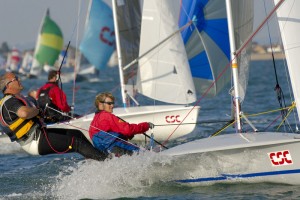
photo: Steve Arkley
Mark: Time pressures with family commitments are making it very difficult for people to get our sailing at the weekend and there seems to be a rise in weekday sailing. Do you think that this is going to end up the way that people go and that you’ll find far more people using their club during the week than the weekend?
Paul: Again, absolutely. I think when you look at the average person, a day at the weekend has become a very precious thing – it’s a huge amount of time that can be put into many different directions, and I think sailing has been the victim of that. I go all over the world, and a lot of the successful clubs that I go to, are racing two or three, or possibly four nights midweek. They race mid-afternoons. I think people’s work commitments have also changed, the internet has changed things, people can now work from home and they can write emails on phones from the sailing club and so on, so I do think that the way that we traditionally think of sailing in England as being a Sunday sport is part of the reason why we have a decline. I think we urgently need to sit down and reappraise how the world works and try and make sailing fit within the way the world is rather than expecting the world to move where sailing is.
Mark: Paul, thank you very much for your time and your thoughts.
Paul: Thank you very much and for coming up to visit.
Written & pics by Mark Jardine for Y&Y.
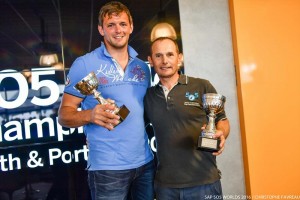





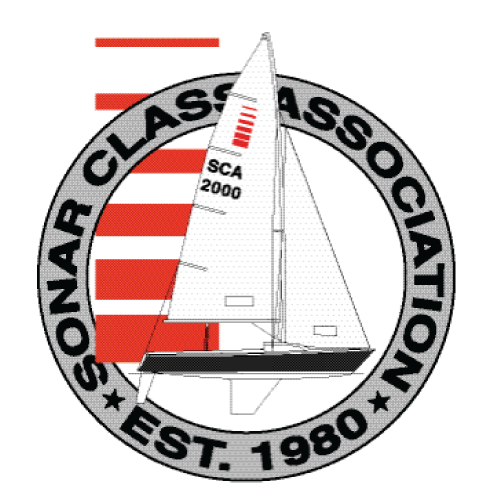



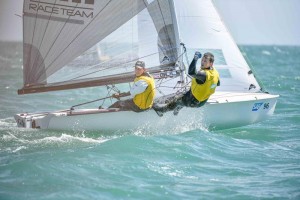
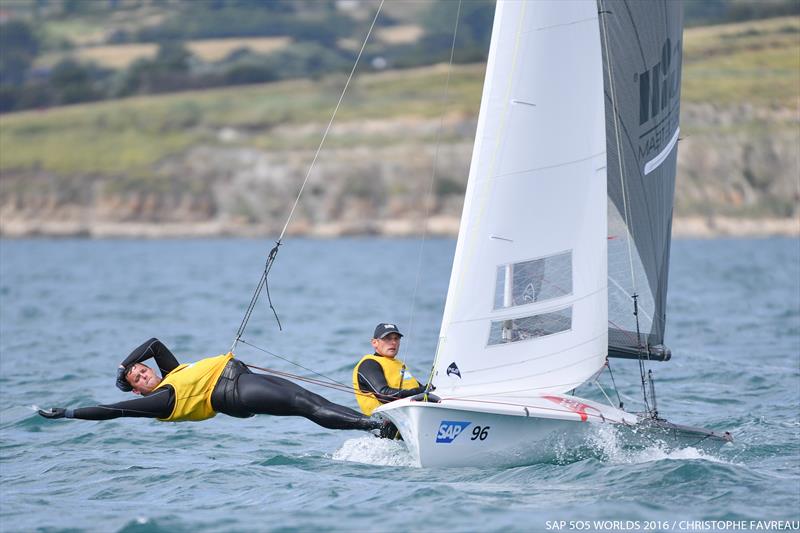
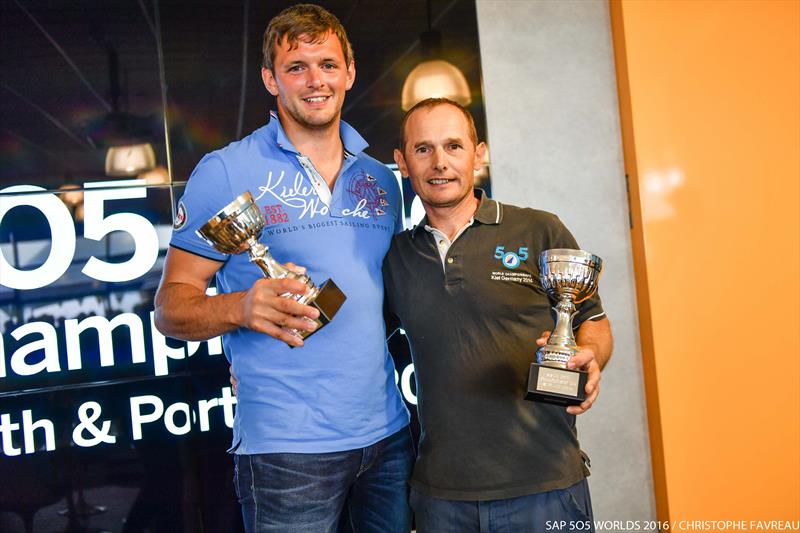
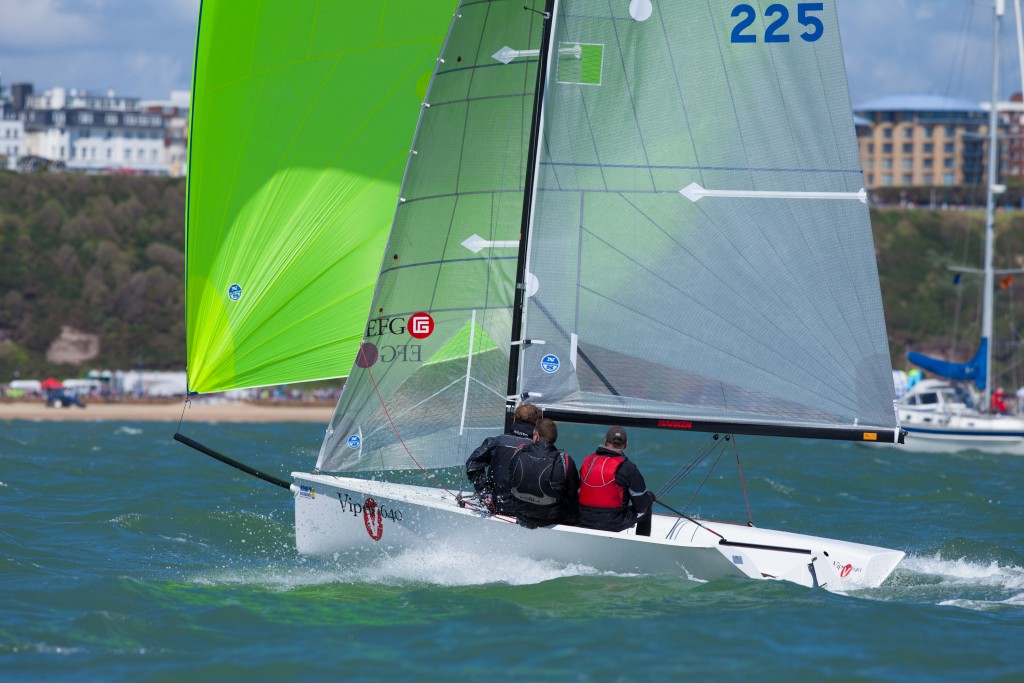
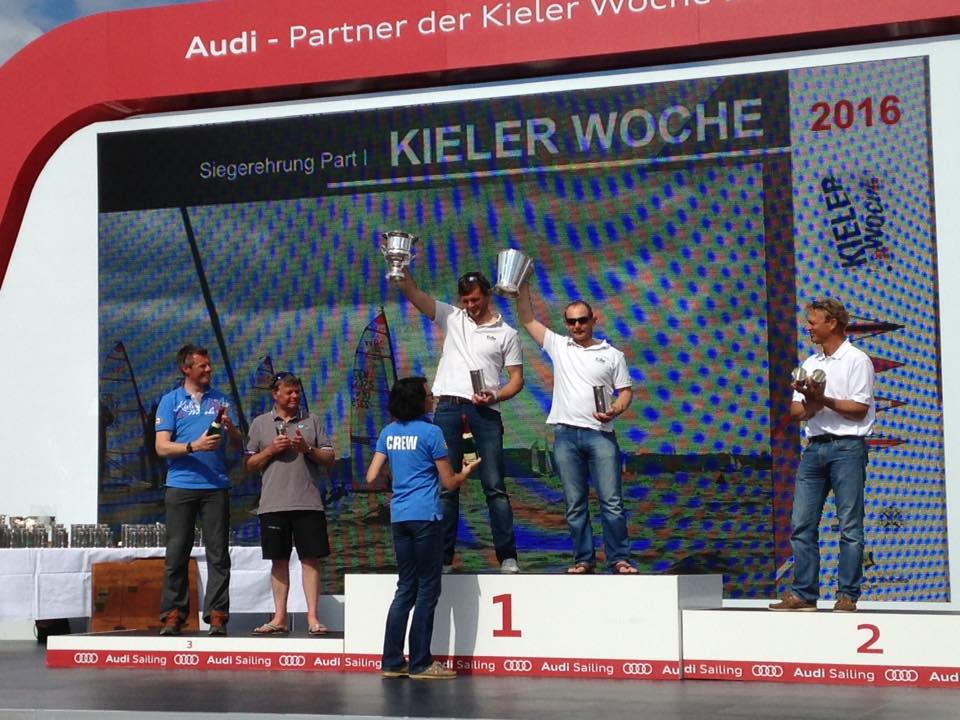



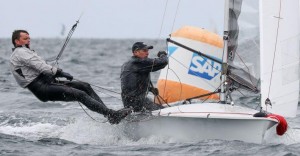

 We currently make the Firefly, the Enterprise, the 505, we’ve just started making 470s, and then in keelboats we make the K6, the Viper, and the Sonar, and we are currently working with the Squib class, which will hopefully come on stream in the near future, and join the other classes. We also build K1, Fireball, and Solo for other companies. Over the years I have been here we have made over 30 classes.
We currently make the Firefly, the Enterprise, the 505, we’ve just started making 470s, and then in keelboats we make the K6, the Viper, and the Sonar, and we are currently working with the Squib class, which will hopefully come on stream in the near future, and join the other classes. We also build K1, Fireball, and Solo for other companies. Over the years I have been here we have made over 30 classes.

